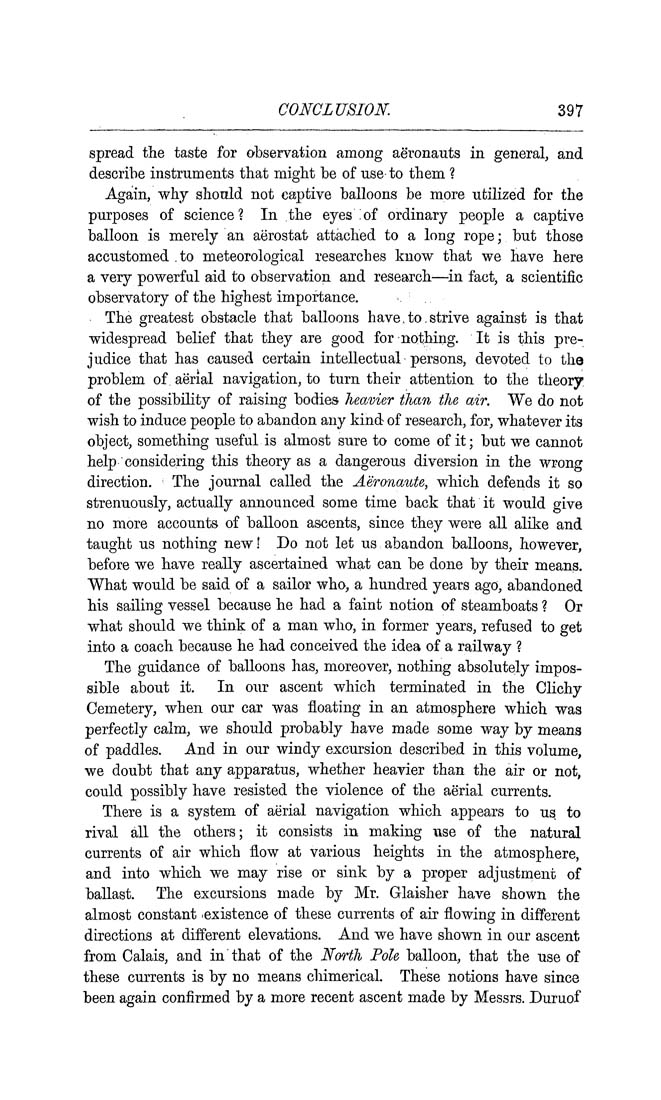CONCLUSION. 397
spread the taste for observation among aeronauts in general, and
describe instruments that might be of use-to them ?
Again, why should not captive balloons be more utilized for the
purposes of science? In the eyes of ordinary people a captive
balloon is merely an aerostat attached to a long rope; but those
accustomed ,to meteorological researches know that we have here
a very powerful aid to observation and research-—in fact, a scientific
observatory of the highest importance.
The greatest obstacle that balloons have, to,strive against is that
widespread belief that they are good for nothing. It is this pre¬
judice that has caused certain intellectual persons, devoted to the
problem of aerial navigation, to turn their attention to the theory
of the possibility of raising bodies heavier than the air. We do not
wish to induce people to abandon any kind of research, for, whatever its
object, something useful is almost sure to come of it; but we cannot
help considering this theory as a dangerous diversion in the wrong
direction. The journal called the Aeronaute, which defends it so
strenuously, actually announced some time back that it would give
no more accounts of balloon ascents, since they were all alike and
taught us nothing new! Do not let us abandon balloons, however,
before we have really ascertained what can be done by their means.
What would be said of a sailor who, a hundred years ago, abandoned
his sailing vessel because he had a faint notion of steamboats ? Or
what should we think of a man who, in former years, refused to get
into a coach because he had conceived the idea of a railway ?
The guidance of balloons has, moreover, nothing absolutely impos¬
sible about it. In our ascent which terminated in the Clichy
Cemetery, when our car was floating in an atmosphere which was
perfectly calm, we should probably have made some way by means
of paddles. And in our windy excursion described in this volume,
we doubt that any apparatus, whether heavier than the air or not,
could possibly have resisted the violence of the aerial currents.
There is a system of aerial navigation which appears to us to
rival all the others; it consists in making use of the natural
currents of air which flow at various heights in the atmosphere,
and into which we may rise or sink by a proper adjustment of
ballast. The excursions made by Mr. Glaisher have shown the
almost constant ^existence of these currents of air flowing in different
directions at different elevations. And we have shown in our ascent
from Calais, and in that of the Nm^th Pole balloon, that the use of
these currents is by no means chimerical. These notions have since
been again confirmed by a more recent ascent made by Messrs. Duruof
|








